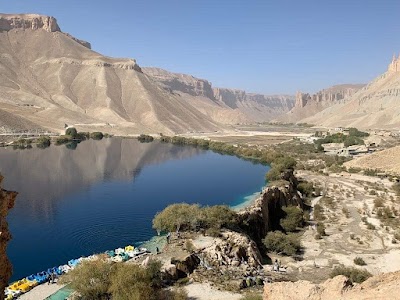Massoud's Tomb (مقبره احمد شاه مسعود)
Overview
Ahmad Shah Massoud, affectionately known as **"The Lion of Panjshir,"** is a revered figure in Afghanistan, celebrated for his steadfast resistance against Soviet occupation in the 1980s and his subsequent fight against the Taliban. His legacy is deeply ingrained in the hearts of many Afghans, and this reverence is poignantly embodied at his resting place, **Massoud's Tomb**, located in the picturesque **Panjshir Valley**.
A few weeks after his assassination on September 9, 2001, Massoud’s grieving family and devoted followers undertook the construction of a mausoleum to honor his memory. This site was envisioned as a symbol of enduring resistance and hope for Afghanistan. Nestled among the towering mountains and lush greenery, the tomb lies approximately **100 kilometers north of Kabul**, making it a serene and significant destination.
The mausoleum's construction began shortly after Massoud's death, with local craftsmen and artisans working diligently to ensure the structure reflected the profound respect the people held for him. The design incorporates **traditional Afghan architectural styles**, blending functional and decorative elements that resonate with the region's rich cultural heritage.
At the heart of the mausoleum is a striking **white marble structure**, distinguished by its simplicity and profound elegance. The choice of white marble symbolizes purity, peace, and the enduring legacy of Massoud. Intricate carvings embellish the mausoleum, showcasing the artisans’ skills and narrating Afghanistan's rich historical and cultural tapestry.
Massoud’s grave, covered with a green cloth inscribed with verses from the Quran, lies at the core of the tomb, reflecting both religious devotion and deep respect. Visitors often find the grave adorned with vibrant flowers, flags, and personal tokens of homage, left by those coming to pay their respects.
Flanking the site are **copper plaques** that recount the story of Massoud's life, his contributions to Afghanistan's freedom, and his enduring legacy. These plaques serve not only as a memorial but also as educational tools for future generations, ensuring that Massoud's spirit and ideals are passed down.
Surrounding the mausoleum is a **beautifully manicured garden** filled with local flora, enhancing the serene atmosphere of the site. Pathways lead visitors through the garden to various points of interest, including a mosque built adjacent to the tomb, where people can pray and reflect in peace.
One of the most striking features of the tomb is its **panoramic view of the Panjshir Valley**. This location was chosen deliberately to symbolize Massoud’s deep connection to the land he so passionately defended. The sweeping vistas provide visitors with moments of tranquility and reflection, making it a truly special place.
Given its significance, security around the mausoleum is a priority. Local security forces maintain a vigilant presence to ensure the safety of visitors and the preservation of this sacred site. Despite these precautions, the tomb remains open to all, attracting both locals and international visitors eager to learn about and pay homage to Massoud's legacy.
Over the years, Massoud’s Tomb has evolved into more than just a burial site; it stands as a **beacon of resistance, resilience, and hope** for many Afghans. This sacred place serves as a reminder of the sacrifices made for freedom, inspiring visitors to strive for a peaceful and prosperous Afghanistan.
Today, Massoud’s Tomb is a site of pilgrimage for thousands, echoing the values and aspirations that Ahmad Shah Massoud championed. It is a testament to his unyielding spirit and the enduring love and respect he earned from his people. More than a static monument, the tomb is a living piece of history that invites reflection and underscores the importance of preserving the ideals for which Massoud dedicated his life.



